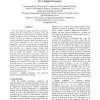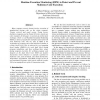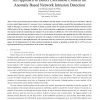28 search results - page 1 / 6 » A similarity based technique for detecting malicious executa... |
IRI
2006
IEEE
13 years 10 months ago
2006
IEEE
With the rapidly increasing complexity of computer systems and the sophistication of hacking tools and techniques, there is a crucial need for computer forensic analysis technique...
ICCD
2004
IEEE
14 years 1 months ago
2004
IEEE
1 Many computer security threats involve execution of unauthorized foreign code on the victim computer. Viruses, network and email worms, Trojan horses, backdoor programs used in ...
IPPS
2007
IEEE
13 years 11 months ago
2007
IEEE
Since current internet threats contain not only malicious codes like Trojan or worms, but also spyware and adware which do not have explicit illegal content, it is necessary to hav...
IEEEARES
2010
IEEE
13 years 9 months ago
2010
IEEE
Spyware represents a serious threat to confidentiality since it may result in loss of control over private data for computer users. This type of software might collect the data and...
KDD
2009
ACM
13 years 9 months ago
2009
ACM
Commercial anti-virus software are unable to provide protection against newly launched (a.k.a “zero-day”) malware. In this paper, we propose a novel malware detection techniqu...



